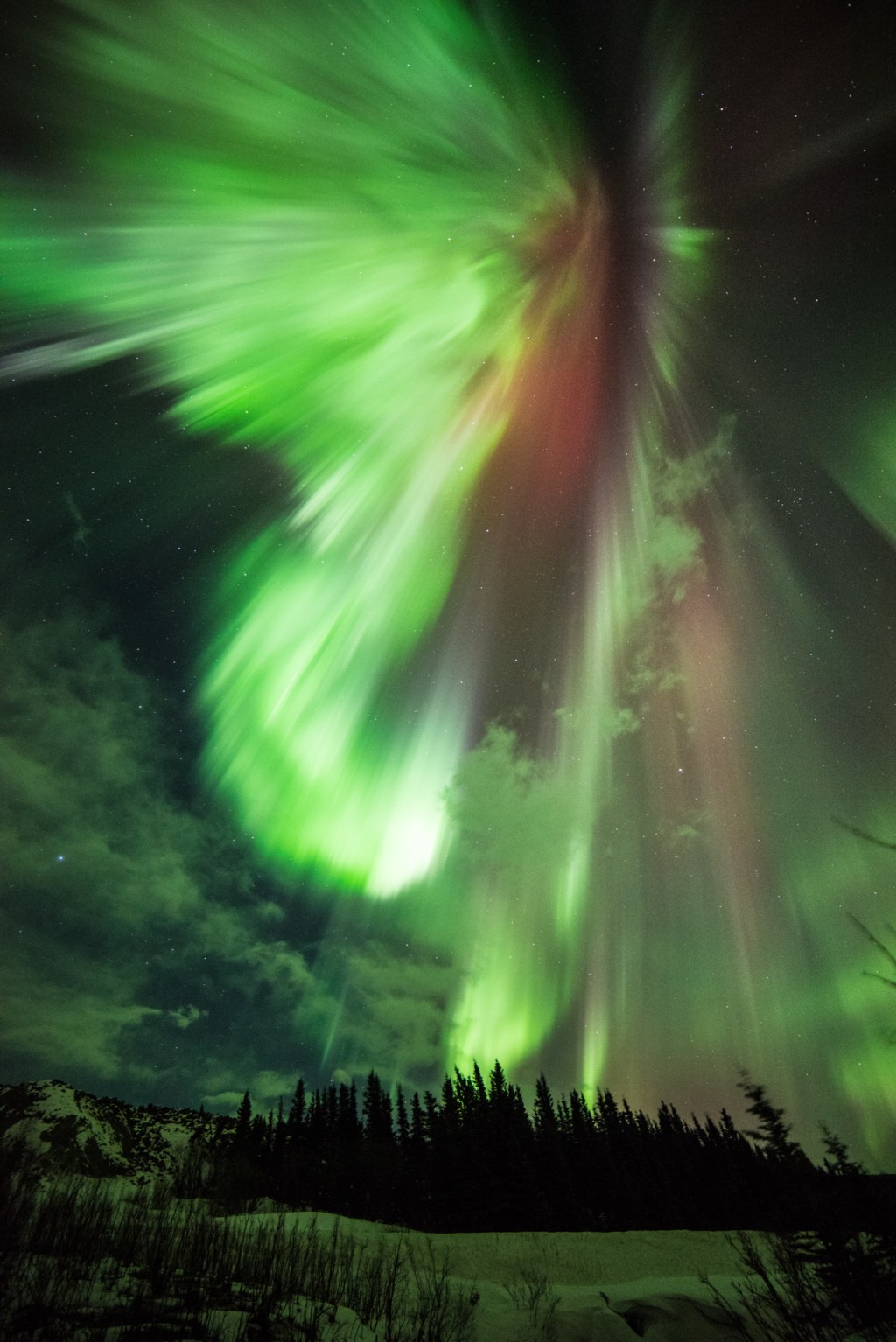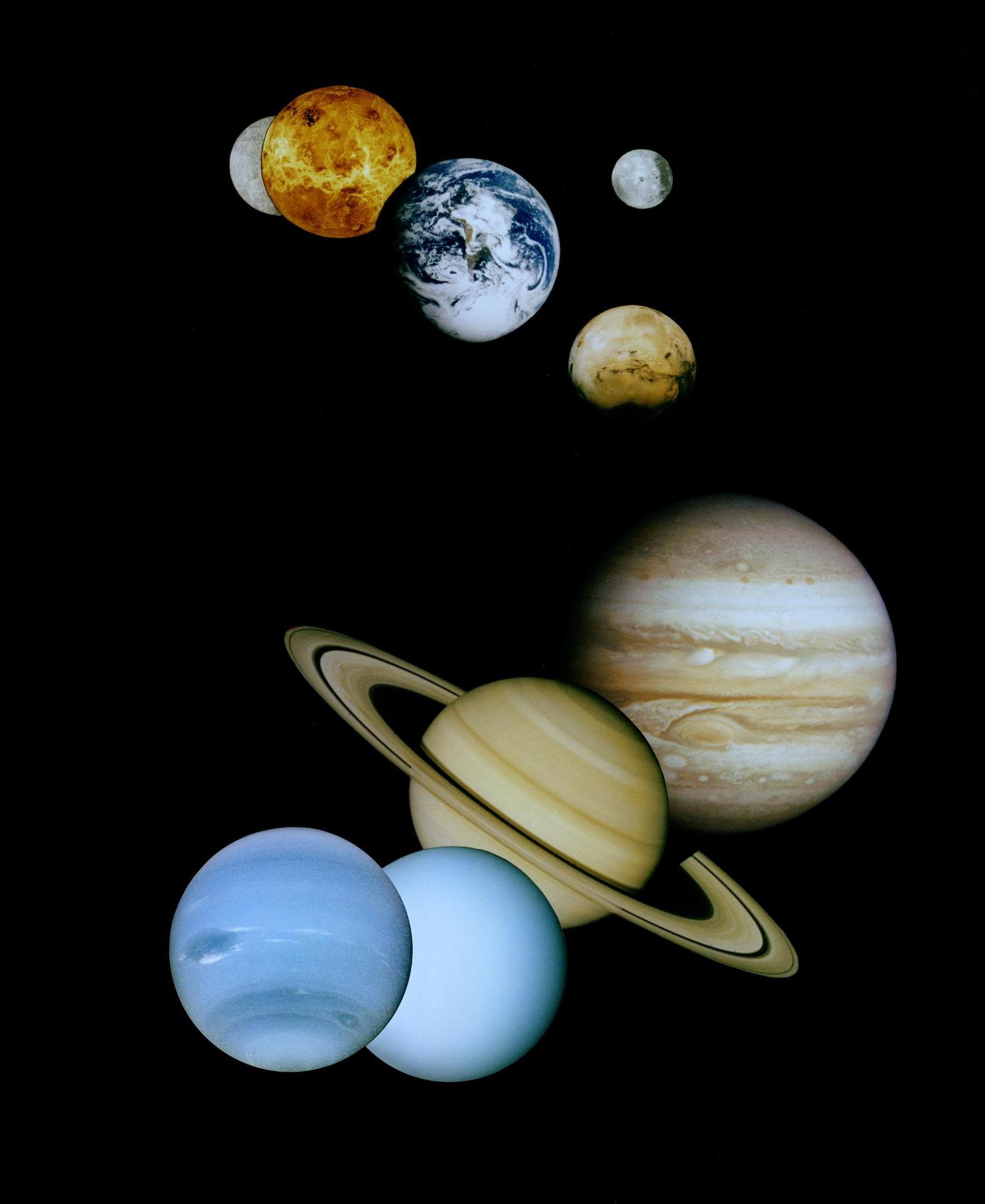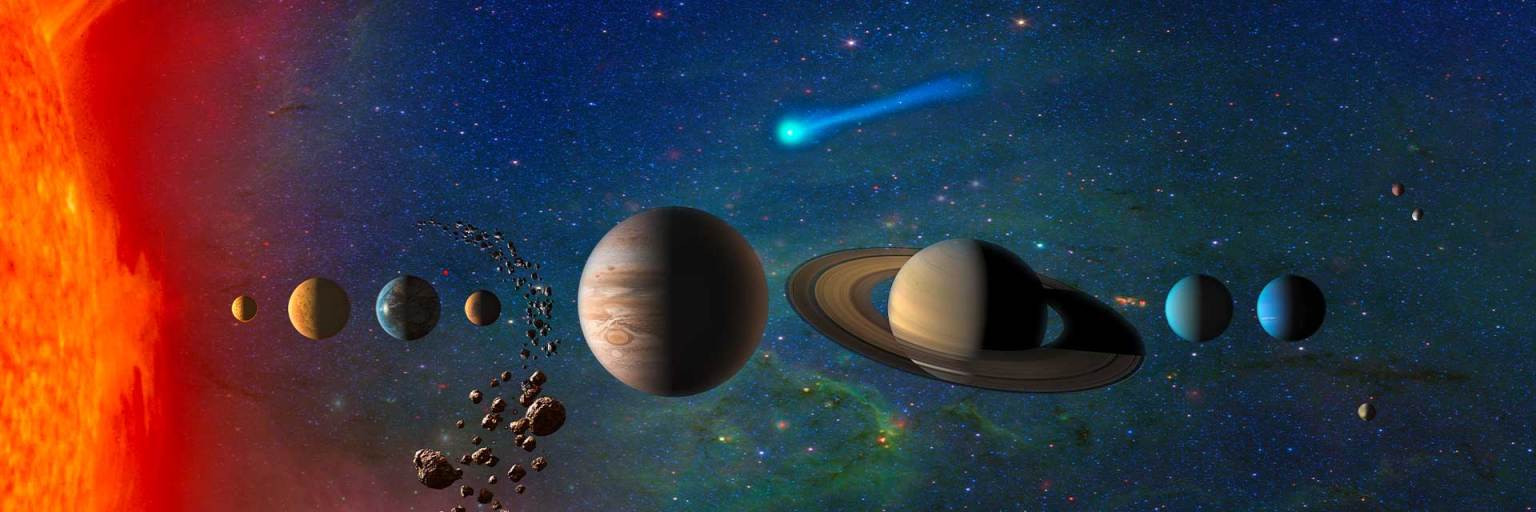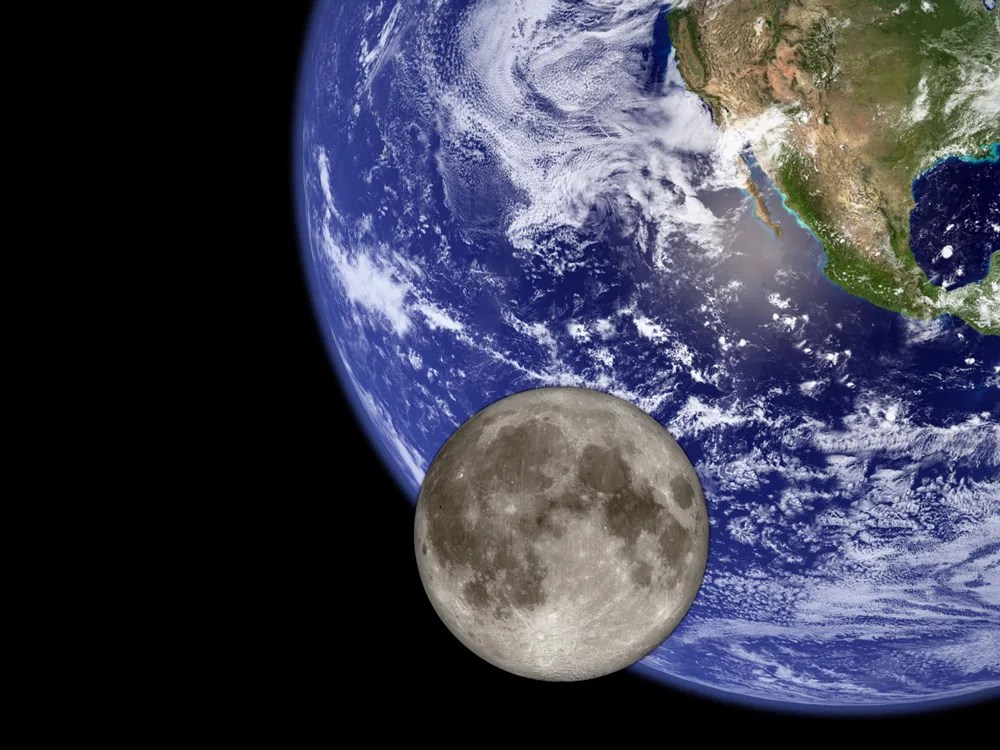The Planetary Science Advisory Committee (PAC) supports the advisory needs of the Planetary Science Division (PSD), the Science Mission Directorate (SMD) and other mission directorates as required, and the NASA Administrator. The PAC is an Advisory committee chartered under the Federal Advisory Committee Act (FACA).
The scope of the PAC includes all aspects of planetary science, scientific exploration of the Moon and Mars, the robotic exploration of the solar system, astrobiology, exoplanet research, space- and ground-based research, technology development, planning, and training required to support these science areas.
In addition to scientific research, the scope encompasses considerations of the development of near-term enabling technologies, systems, and computing and information management capabilities, as well as developments with the potential to provide long-term improvements in future operational systems.
Responsibility for biological planetary protection is outside the purview of the PAC.
The Planetary Science Advisory Committee is a new FACA committee of NASA, replacing the NAC SC Planetary Science Subcommittee
PAC Members
- Chair: Shannon Curry, University of California, Berkeley
- Executive Secretary: Katharine Robinson, NASA Headquarters
- Brent Barbee, NASA Goddard Space Flight Center
- Kandi Jessup, Southwest Research Institute, Boulder
- John Grant, Smithsonian National Air and Space Museum
- David Murrow, Retired (Lockheed Martin)
- Deborah Woods, MIT Lincoln Laboratory
- Ryan Ogliore, Washington University in St. Louis
- Laura Barge, JPL
- Jamey Szalay, Princeton University
- Maitrayee Bose, Arizona State University
PAC Meeting Documents
Please direct questions regarding the Planetary Science Advisory Committee to Katharine Robinson, Executive Secretary.
November 12-13, 2024
July 9-11, 2024
- Agenda: July 9-11, 2024
- Findings: July 9-11, 2024
- Meeting Minutes: July 9-11, 2024
- Presentations
- MSR IRB Response Team
- PSD Update
- IDEA Cross-AG Working Group
- Mars Exploration Program
- DSN Usage Update
- Moon to Mars Architecture
- Artemis Science Planning - Training
- Artemis Science Planning - Samples
- AG Update: MEPAG
- AG Update: ExMAG
- AG Update: OPAG
- AG Update: ExoPAG
- AG Update: SBAG
- AG Update: MAPSIT
- AG Update: LEAG
- AG Update: VEXAG
- AG Update: MEXAG
- AG Update: OWWG
- AG Update: IDEA CAWG
- Lunar Discovery and Exploration Program
- Lunar Science Strategy Update
- Lunar Reference Frame Update
- R&A Update
- Astrobiology Update
- RCN NOW Update
- NExSS Update
March 4-5, 2024
- Federal Register Notice
- Agenda
- Findings
- Presentations
- PSD Update - L. Glaze
- PDCO Interagency Deep Space Radar Study - L. Johnson, K. Fast
- MEP Update - E. Ianson
- Moon to Mars Tiger Team Report - B. Jakosky
- RCN Update: NfoLD - A. Davila
- RCN Update: PCE3 - L. Williams
- EDIA Workshop - J. Rathburn
- Lunar Update - J. Kearns
- ESSIO Update - S. Noble
- R&A Update - D. Santiago-Materese, K. Vander Kaaden
- RPS Update - A. Maynard
- Astrobiology Update - D. Grinspoon, L. Hays
- AG Update: MExAG - C. Ernst
- AG Update: ExoPAG - N. Hinkel
- AG Update: OPAG - A. Henrix
- AG Update: LEAG - B. Greenhagen
- AG Update: MAPSIT
- AG Update: VEXAG - N. Izenberg
- AG Update: EDIA CAWG
- AG Update: OWWG - C. Philips, M. Bland
November 13-14, 2023
- Federal Register Notice
- Agenda
- Findings
- Presentations
- PSD Update - L. Glaze, C. Webb
- SRB Process Review - W. Peters
- MEP Update - T. Morgan, M. Meyer
- MSR Independent Review - S. Connelly, S. Thibault, M. Meyer
- Mental Health in the Planetary Science Community - D. Trang
- Astrobiology Update - D. Grinspoon, L. Hays
- LIFE Update - F. Rosenzweig, M. Droser
- NexSS Update - O. Cohen
- GPRAMA Evaluation - S. Diniega, D. Smith
- DSN Update - J. Hays
- R&A Update - D. Santiago-Meterese, K. Vander Kaaden
- PDE Update - R. Fergason
- AG Update: LEAG - B. Greenhagen
- AG Update: MAPSIT
- AG Update: VEXAG - N. Izenberg
- AG Update: MEPAG - V. Hamilton
- AG Update: MExAG - C. Ernst
- AG Update: OPAG - A. Hendrix
- AG Update: SBAG - L. Feaga
- AG Update: CAWG
- AG Update: OWWG
- AG Update: ExMAG - B. Cohen
- AG Update: EXoPAG - N. Hinkel
- ESSIO/LDEP Update - J. Kearns
- Integrated Lunar Science Strategy - S. Noble
June 21-23, 2023
- Federal Register Notice
- Agenda
- Findings
- Meeting Minutes
- Presentations
- PSD Update - L. Glaze, J. Salute
- ESSIO/Lunar Science Update - J. Kearns, S. Noble
- IRTF Independent Review - L. Paganini, N. Chanover
- R&A Update - S. Rinehart
- MSR Update - J. Gramling, et al.
- SSERVI Update - G. Schmidt, et al.
- MEP Update - E. Ianson, M. Meyer
- Astrobiology Update - M. Voytek, D. Scalice, et al.
- RCN Update - NOW
- CAWG Update - M. McAdam, J. Rathburn
- AG Updates
- Inclusion Plans in Research Proposals - A. Nahm, R. Watkins
- PDCO Update - L. Johnson, K. Fast
- Psyche IRB Response Summary - L. Leshin
February 28-March 1, 2023
- Federal Register Notice
- Agenda
- Findings
- Meeting Minutes
- Presentations
- PSD Update - L. Glaze
- Astrobiology Update - M. Voytek
- RCN Reports
- MEP Update - T. Morgan, M. Meyer
- MSR Update - J. Gramling, M. Meyer
- ESA ExoMars Update - J. Vago
- R&A Update - S. Rinehart
- PDCO Update - L. Johnson, K. Fast
- Lunar Discovery and Exploration Program Update - J. Kearns, S. Noble
- SMD IDEA Update - E. Holmes, J. Sosa, K. Barnette
- AG Updates
- SRB Processes - S. Fitzpatrick
December 5-6, 2022
- Federal Register Notice
- Agenda
- Findings
- Meeting Minutes
- Presentations
- PSD Update - L. Glaze, J. Salute
- Psyche IRB - T. Young
- MEP/MSR Updates - E. Ianson, M. Meyer, J. Gramling
- DSN Update - P. Baldwin, J. Volosin
- Decadal Survey Discussion
- R&A Update - S. Rinehart
- PSEF 2022 Update - A. Burton, J. Grossman
- Cross-AG IDEA Working Group
- AG Presentations
- Apophis SAT - J. Dotson
- PDCO Update - L. Johnson, K. Fast
- Astrobiology and RCN Update - M. Voytek, RCN Representatives
- ESSIO/Lunar Science Update - J. Kearns, S. Noble
- PSD Interns 2022 - M. Thompson, L. Moore, Intern Cohort
June 21-23, 2022
- Federal Register Notice
- Agenda
- Findings
- Meeting Minutes
- Presentations
- PSD Update - L. Glaze, J. Salute
- PMSR 2022 - L. Hays, H. Throop
- MEP/MSR Update - E. Ianson, M. Meyer, J. Gramling
- AG Updates
- PDCO Update - L. Johnson, K. Fast
- R&A Update - S. Rinehart
- IDEA Update - L. Moore
- H2O Program Update - D. Smith
- Cross-AG IDEA Update - M. McAdam, P. Prem
- LPI Update - L. Gaddis
- Astrobiology Update - M. Voytek, L. Hays
- Lunar Science Updates - S. Noble
- PDE and SPD-41a Updates - B. McCauley Rench, M. Milazzo, S. Crawford
- Decadal Survey - R. Canup, P. Christensen
February 15, 2022
- Federal Register Notice
- Agenda
- Minutes
- Findings
- Presentations
- PSD Update - L. Glaze
- PAC 101 - S. Rinehart
- R&A Update - S. Rinehart
- AG Updates
November 15-16, 2021
- Agenda
- Minutes
- Findings
- PSD Status Report - L. Glaze
- ESSIO - B. Bailey, J. Kearns
- Mars Exploration Status Highlights - E. Ianson
- DAPR Update - D. Santiago-Materese
- PDCO - L. Johnson
- Astrobiology Update - M. Voytek
- MEPAG - R.A. Yingst
- VEXAG - D. Dyar
- ExMAG - B. Cohen
- SBAG - B. Burratti
- ExoPAG - M. Meyer
- OPAG - L. Spilker
- MExAG - S.A. Hauck
- MAPSIT - J. Stopar
- LEAG - A.L. Fagan
- IDEA - L. Moore, N. Zellner
- Technology Update - C. Mercer
- Major Equipment and Facilities - A. Burton
- R&A Updates - S. Rinehart
June 14, 2021
- Federal Register Notice: June 14, 2021
- Agenda: June 14, 2021
- Minutes: June 14, 2021
- Discussion Points: June 14, 2021
- Presentations
- Planetary Science Division Status Report - L. Glaze
- R&A Update - S. Rinehart
- Mars Exploration Program/Mars Sample Return Update - M. Meyer, J. Gramling
- SMD Information Policy - S. Crawford
- Planetary Defense Update - L. Johnson, K. Fast
- Planetary Data Ecosystem Independent Review Board - B. McCauley Rench, M. McGrath
- NASA Demographics Reporting - L. Barbier
- Cross-AG IDEA Working Group - M. Milazzo, M. McAdam
- AG Discussions
March 1-2, 2021
- Federal Register Notice: March 1-2, 2021
- Agenda: March 1-2, 2021
- Minutes: March 1-2, 2021
- Findings: March 1-2, 2021
- Presentations
- Planetary Science Division Update - L. Glaze
- Exploration Science Strategy and Integration Office Update - J. Kearns
- Astrobiology Update - M. Voytek
- Planetary Defense Coordination Update - K. Fast, L. Johnson
- Mars Exploration Program/Mars Sample Return Update - E. Ianson, J. Gramling, M. Meyer
- Decadal Survey Update - D. Smith
- R&A Update - S. Rinehart
- Inclusion Diversity Equity Accessbility Report - M. Thompson
- AG Updates
Nov. 30, 2020 (Virtual Meeting)
- Federal Register Notice: Nov. 30, 2020
- Agenda: Nov. 30, 2020
- Minutes: Nov. 30, 2020
- Findings: Nov. 30, 2020
- Presentations
- Planetary Science Division Status Report - L. Glaze
- Mars Exploration Program (MEP) - E. Ianson
- Mars Sample Return Update - J. Gramling
- Astrobiology Update - M. Voytek
- PSD R&A Update - S. Rinehart
- ISFM Overview - M. New, S. Rinehart
- ISFM Overview 2 - S. Rinehart
- ARC ISFM Update - J. Hollingsworth
- GSFC ISFM Update - S. Getty
- JSC ISFM Update - J. Alred
- PDCO Update - L. Johnson
- AG Updates - PAC/AG Reps
Aug. 17-18, 2020 (Virtual Meeting)
- Federal Register Notice: Aug. 17-18, 2020
- Agenda: Aug. 17-18, 2020
- Minutes: Aug. 17-18, 2020
- Findings: Aug. 17-18, 2020
- Presentations
- Planetary Science Division Status Report - L. Glaze
- Planetary Science Division R&A Status Report - S. Rinehart
- Diversity, Inclusion and Equity - M. Thompson
- Planetary Decadal Updated - D. Smith
- Mars Program Status Update - J. Watzin
- Mars Science - M. Meyer
- Mars Sample Return - J. Gramling
- Lunar Program (ESSIO) - B. Bailey
- VIPER Mission Update - T. Colaprete
- FY20 GPRAMA Science Performance Goals
- ExoPAG Updates - M. Meyer
- LEAG Update - S. Lawrence
- MAPSIT: Making Data Accessible and Usable - J. Radebaugh
- SBAG - B. Buratti
- MExAG - S. Hauck
- OPAG - J. Moore
- VEXAG - D. Dyar
- MEPAG - A. Yingst
March 9-11, 2020
- Federal Register Notice: March 9-11, 2020
- Agenda: March 9-10, 2020
- Minutes: March 9-10, 2020
- Findings: March 9-10, 2020
- Presentations
- Planetary Science Division Status Report - L. Glaze
- Planetary Research Division - S. Rinehart
- Planetary Protection - B. McCauley Renh
- Mars Exploration Program (MEP) - M. Meyer, J Watzin
- Lunar Program - S. Clarke
- Planetary Defense Coordination Office - L. Johnson
- Planetary Data System Status and Future Plans - L. Prockter, T. McClanahan
- Planetary Data Systems (PDS) - B. McCauley Rench
- Exoplanets in our Backyard - N. Izenberg
- Planetary Science with Astrophysical Assets - J. Bauer
- Solar System Science with JWST - H. Hammel
- Mercury Exploration Analysis Group (MExAG) - C. Ernst
- Venus Exploration Analysis Group (VEXAG) Steering Committee - D. Dyar
- Small Bodies Assessment Group (SBAG) - B. Buratti
- Outer Planet Assessment Group (OPAG) Update - J. Moore
- Mars Exploration Program Analysis Group (MEPAG) Report - A. Yingst
- Mapping and Planetary Spatial Infrastructure Team (MAPSIT): Making Data Accessible and Usable - J. Radebaugh
- Lunar Exploration Analysis Group (LEAG) Update - S. Lawrence
- Curation and Analysis Planning Team for Extraterrestrial Materials - K. McKeegan
Dec. 6, 2019
- Federal Register Notice: Dec. 6, 2019
- Agenda: Dec. 6, 2019
- Meeting Minutes: Dec. 6, 2019
- Recommendation: Dec. 6, 2019
- Presentations
- Planetary Science Division Update – Lori Glaze
- Research & Analysis - Stephen Rinehart
- Planetary Mission Senior Review - William Knopf
- EXPLORE SCIENCE: Research Program Innovations - Michael H. New
- Mars Exploration Program Analysis (MEPAG) Update – R. Aileen Yingst
- Curation and Analysis Planning Team for Extraterrestrial Materials (CAPTEM) Update - Kevin D. McKeegan
- Lunar Exploration Analysis Group (LEAG) Update - Samuel Lawrence
- Mapping and Planetary Spatial Infrastructure Team Update – Jani Radebaugh
- Outer Planet Assessment Group (OPAG) Update - Jeff Moore
- Venus Exploration Analysis Group (VEXAG) Update – Darby Dyar
- Small Bodies Assessment Group (SBAG) Update - Bonnie J. Buratti
Sept. 23-24, 2019
- Meeting Minutes: Sept. 23-24, 2019
- Federal Register Notice: Sept. 23-24, 2019
- Findings: Sept. 23-24, 2019
- Recommendation: Sept. 23-24, 2019
- Revised Agenda: Sept. 23-24, 2019
- Presentations
- SMD Welcome and Updates - Thomas Zurbuchen
- Planetary Science Division Status Report - Lori Glaze
- PSD Research & Analysis - Stephen Rinehart
- Lunar Discovery & Exploration Program Status - Steve Clarke, Sarah Noble
- PSD Senior Review - Ralph McNutt
- Mars Exploration Program (MEP) Update - Jim Watzin
- Mercury Science & Exploration Update - Shoshana Weider
- Government Performance and Results Act/Modernization Act (GPRAMA) Performance Evaluation
- Venus Exploration (VEXAG) Analysis Group - Darby Dyar
- Small Bodies Assessment Group (SBAG) - Michael DiSanti
- Outer Planets Assessment Group (OPAG) Update - Linda Spilker
- Mars Exploration Program Analysis Group (MEPAG) Report - Aileen Yingst
- Mapping and Planetary Spatial Infrastructure Team (MAPSIT) - Justin Hagerty
- Lunar Exploration Analysis Group (LEAG) - Samuel Lawrence
- Curation and Analysis Planning Team for Extraterrestrial Materials (CAPTEM) - Kevin McKeegan
Sept. 26, 2018
- Meeting Minutes: Sept. 26, 2018
- Federal Register Notice: Sept. 26, 2018
- Agenda: Sept. 26, 2018
- Presentations
July 2, 2018
- Meeting Minutes: July 2, 2018
- Findings: July 2, 2018
- Federal Register Notice: July 2, 2018
- Agenda: July 2, 2018
- Presentations
Feb. 21-23, 2018
- Meeting Minutes: Feb. 21-23, 2018
- Findings: Feb. 21-23, 2018
- Federal Register Notice: Feb. 21-23, 2018
- Agenda: Feb. 21-23, 2018
- Presentations
- Planetary Science Division Status Report - Jim Green
- Lunar Discovery and Exploration Program - Sarah Noble
- Planetary Science R&A Update - Jonathan Rall
- Review of NASA's Planetary Science Division's Restructured Research and Analysis Programs - Stephen Mackwell
- R&A Charge to SMD Advisory Committees - Dr. Michael New
- Mars Exploration Program Update - Jim Watzin, Michael Meyer
- Joint Workshop on Induced Special Regions - Michael Meyer
- Planetary Data System Status and Future Plans - Tom Morgan, Maria Banks
- The Deep Space Network - Joseph Lazio
- The Nexus for Exoplanet System Science - Dr. Mary Voytek
- Solar System Exploration Research Virtual Institute (SSERVI) - Sarah Noble
- Ceres Pre-Decadal Science Definition Team - Michael Kelley
- Planetary Defense Coordination Office - Lindley Johnson
- Curation and Analysis Planning Team for Extraterrestrial Materials - Kevin McKeegan
- LEAG Report to the Planetary Science Advisory Committee - Clive Neal, Sam Lawrence
- The Importance and Challenge of Building a Planetary Spatial Data Infrastructure - Jani Radebaugh
- Mars Exploration Program Analysis Group (MEPAG) Update - Jeffrey Johnson
- Outer Planets Assessment Group (OPAG) Update - Alfred McEwen
- Report from the Small Bodies Assessment Group (SBAG) - Tim Swindle
- Venus Exploration Analysis Group (VEXAG) Update - Robert Grimm, Martha Gilmore




































